
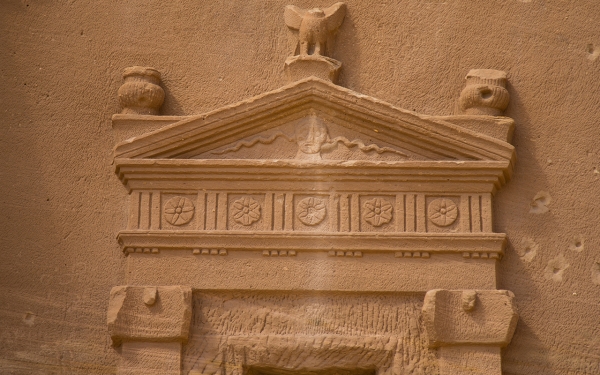
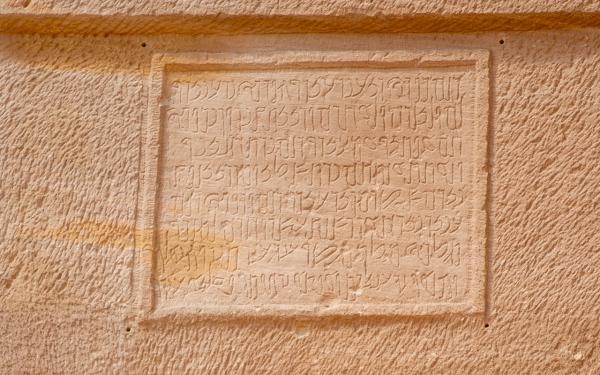
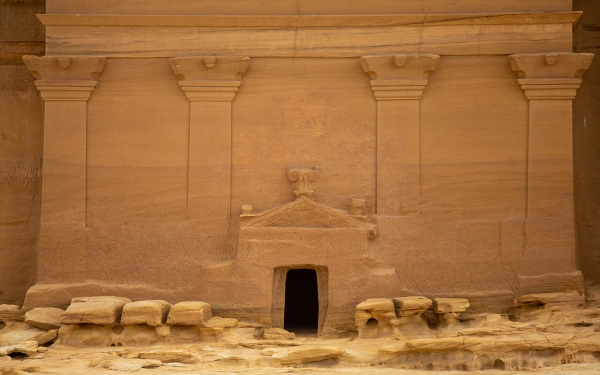
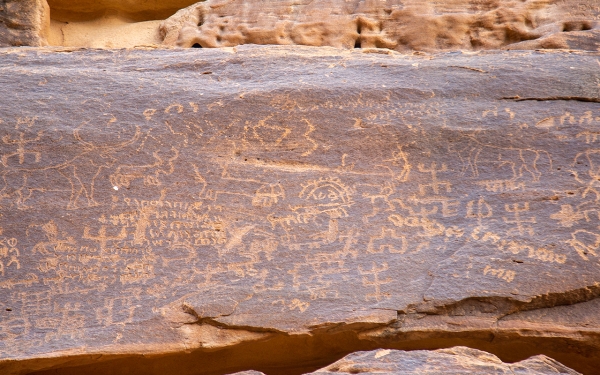
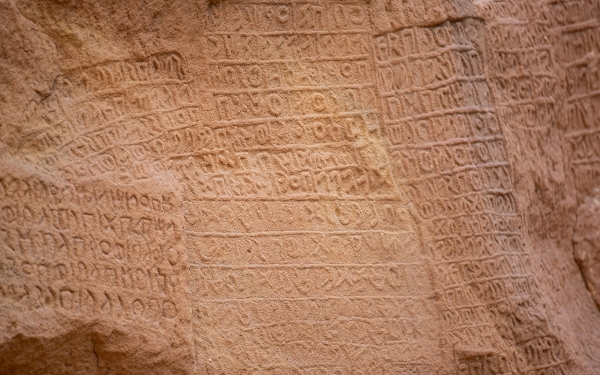
Archaeological Inscriptions in al-Ula are a collection of inscriptions that are dispersed throughout the valleys, cliffs, and caverns within al-Ula Governorate, Kingdom of Saudi Arabia. The origins of some of these inscriptions date back to the Safavid, Aramaic, Thamudic, Minaean, Greek, and Latin civilizations, while others trace back to ancient Arab kingdoms and the early Islamic era. These inscriptions serve as invaluable windows into the daily life of ancient people. Notably, al-Ula is home to Hijr site, which is the first Saudi archaeological site to be inscribed on the United Nations Educational, Scientific and Cultural Organization (UNESCO) World Heritage List.
History of archaeological inscriptions in al-Ula
In ancient times, al-Ula Oasis bore the name of Dedan. During that era, it stood as a flourishing city and served as the capital of the Kingdom of Lihyan. Its inhabitants worked in agriculture, commerce, architecture, sculpture, and writing. Hundreds of archeological inscriptions from numerous historical eras that date back thousands of years are found in al-Ula. Jabal al-Aqra’ houses over four hundred inscriptions, while Jabal Ikmah is an open museum that contains archeological texts and inscriptions from the Didanite and Lihyanite civilizations.
Archaeological inscriptions in al-Ula include both drawings of humans and animals. They provide a historical preview of the region and depict the evolution of life and language among its ancient inhabitants. These inscriptions have documented images of the lives of people during that period. In the past, al-Ula served as a route for trade caravans, so travelers drew on the sides of the roads they passed, depicting animal shapes and various scenes. As people settled in al-Ula and embraced livestock herding, these rock inscriptions began to incorporate depictions of humans, wild and tamed animals, and scenes of grazing, hunting, and fighting.
Archaeological inscriptions in Hijr
Hijr, the first Saudi archaeological site to be inscribed on the UNESCO World Heritage List, boasts approximately 110 tombs carved from rock formations. Nabateans used them to bury figures of high status within their society. The tombs have rock inscriptions describing the people who are buried within, including healers, military figures, and local leaders. Hijr mountains also bear hundreds of rock inscriptions from successive historical eras, documenting the passage and settlement of many peoples and civilizations there for thousands of years.
On one of the rock facades in Hijr site, there is an inscription from different eras, depicting two camels rendered in a distinct style. Nearby, a group of camels and horses in different shapes is depicted, implying their association with different historical eras. their belonging to different periods. In an adjacent rock cavity, a camel is depicted above a Lihyanite inscription, reading that Heba bint Nakhna', Safar, and Wodi performed the act of haqana - making a specific offering to the gods.
In one of the inscriptions, caravans of camels are depicted in a similar style. On another facade, there is a multi-tiered set of inscriptions. These inscriptions feature drawings of various camels, each with distinct inscription styles, in addition to several Thamudic texts. On a lower level, the oldest camel inscriptions appear, dating back approximately two thousand years and showcasing a stone-tapping technique. On the lowest level, a collection of elements is depicted. Some represent humans, while others portray camels and scenes of ibex hunting. An inscription appears on a nearby rock facade, which soars five meters above the ground. This inscription comprises a group of camels alongside Thamudic inscriptions.
Themes of archaeological inscriptions in Hijr
Hijr features inscriptions in different shapes, sizes, and styles of carving for niches to obtain the protection of gods or for other ideological reasons. One of them is for Dushara, a Nabatean god represented by the shape of an eagle. On its sides is an inscription in the form of two urns symbolizing life and water. On one of the rocks, there are inscriptions on successive layers indicating the continuity of civilization for the region. Carved shapes and writings overlap like layers in a variety of styles and colors, depicting the forms of animals, including horses, camels, ibexes, and others. This comes in addition to hunting scenes with dogs, fighting scenes, and humans on camels and horses. It also bears Thamudic and Nabataean inscriptions that discuss pilgrimage rituals and sacrifices offered to gods.
The rock inscriptions documented the robberies of trade caravans by bandits. A depiction of a man battling while clutching a camel in one hand and fighting in the other can be seen carved into one of the rocks. Inscriptions in Thamudic, Nabataean, Dadani, and Aramaic are also found on this facade. Some inscriptions show the influence of Greek architecture, which is represented in the designs of niches topped by a triangle and a double frame. Other inscriptions depict weaponry used by humans, such as a human form carrying a bow and another holding war tools, which are a spear and shield, with a sword secured at the waist.
Related quizzes
Related articles

